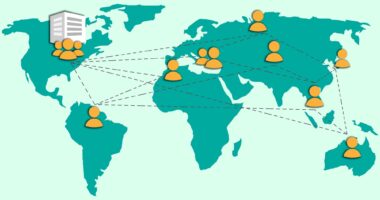
Pivoting successfully relies on seeing that your business has a problem and addressing it head-on.
Grow Your Business, Not Your Inbox
Stay informed and join our daily newsletter now!
October 27, 2020 5 min read
Opinions expressed by Entrepreneur contributors are their own.
Companies looking at changing their models to adapt to the Covid-19 crisis have been using the term “pivoting” extensively. We already know that a pivot is a hinge point that allows you to exert less force to move a heavy object. In business, allows you to develop laterally in the market. Several well-known enterprises have successfully pivoted during the pandemic, demonstrating that it can be done quite successfully once a company has a plan. Extending a business’s capabilities with the aim of long-term profitability and sustainability is what has driven so many enterprises to consider pivoting into related markets.
Enterprises pivoting to adapt
Pivoting successfully relies on seeing that the business has a problem and addressing it head-on. Believe in Banking mentions that Spotify changed its business model from being a music provider to being a tastemaker and podcast distributor. Initially, Spotify’s business model depended heavily on free users listening to ads. However, as the pandemic worsened, businesses had less income to devote to an ad budget. As a result, companies like Spotify that relied on that revenue were left out in the cold.
Related: 5 Ways to Become a Stronger Business Amidst Crisis
Instead of fighting for an ever-decreasing portion of the ad revenue pie, they decided to shift their focus. The company already had an audio distribution platform. Now it was time to monetize those free users by building original content. In a move that mirrored Netflix a few years ago, Spotify started buying up the sole rights to popular podcasts and drawing in users because of this exclusive content. In effect, the company found it’s pivot and shifted gears, without even needing to rethink its business strategy extensively.
Successful small business pivots
Corp Magazine notes that small businesses that have been hit by the COVID crisis are also pivoting into the online sphere. Some of these entrepreneurs already had companies that were forced to close their doors. Instead, they decided to change their focus to teaching others and giving them an online platform to showcase their goods.
These small businesses rely on trade shows, and other in-person meets to sell their products and increase their distribution. Online platforms offer them a chance to share the connections they made before the US government’s economic halt, in the hopes they could help other small businesses thrive. Companies like Moxe that already have an online presence have invested more in promoting their storefront than distribution to real-world locations.
Related: 3 Crucial Risk-Avoidance Strategies to Protect Your Business
Other small businesses have realized that the need for specific products remains, but getting them is not nearly as easy as they used to be. Smart farmers that have lost access to their primary market of upper-class restaurants can pivot into supplying directly to customers. Restaurants that no longer have customers to serve can either invest in a mobile app provider for delivery or offer their services as a “ghost kitchen.” These are extensible and long-term adaptations that ensure the business still has an income while the pandemic (and the associated economic slowdown) lasts.
The core elements needed to pivot successfully
When a company intends to pivot, it needs to be aware of three key factors:
1. Understand a pandemic-fueled trend
Because people have changed how they work, play, and shop, the only way a pivot would be successful is to consider the new trends in these areas. Remote work, along with an increased dependence on technology due to social distancing, provides ample opportunity to businesses who want to find new, exciting ways to capitalize on their market. Companies have shifted to using online storefronts and mobile apps to interact with customers. Those that embrace this new digital lifestyle stand to outpace their competition that is patiently waiting for physical meeting spaces to reopen.
2. Extend the company’s existing business model
Successful pivoting doesn’t rely on entering a brand new space. Some companies are associated with doing certain things. Prada, for example, is known for making fashionable accessories. If a company needs to be successful in their pivot, they should look at related areas to their primary product. Prada’s new line of designer face masks shows that they leveraged their brand awareness to produce a viable product that appeals to a post-pandemic world.
3. Pivots must be profitable and sustainable
If a business intends to pivot, it needs to be both profitable and sustainable. The product or service the company offers must preserve and enhance brand value, and encourage customers to buy into the new idea. Over time, the business will be able to switch over from its initial profit generation business model into a new one that’s sustainable over the long term in a COVID-affected world.
Getting Rid of Inflexible Businesses
While the economic depression the world will face is a scary prospect for businesses, it also offers a ray of hope. Inflexible companies will be the first ones to fold. Those that can’t adapt to the “new normal” will end up paying the price for building a rigid business model based on the idea that change will never come. The changing world will reward businesses with the foresight and the ability to change how they do business quickly.
Related: How This Problem-Solving CEO Is Keeping Her Restaurants’ Doors Open
Times of crisis tend to favor small businesses that can change their configurations quickly. Larger businesses that have to go through layers of bureaucracy tend to be much slower when they have to change. Pivoting allows a company to redirect itself while maintaining its momentum. During this pandemic, it’s the most effective method of ensuring that a business remains profitable over the long term.
This article is from Entrepreneur.com









